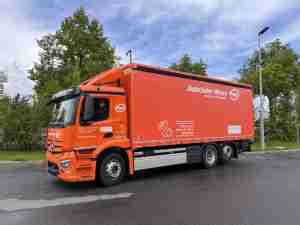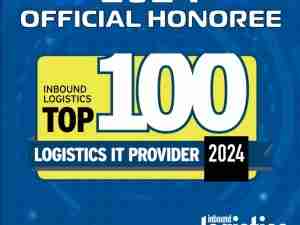Optimas Solutions, a global industrial manufacturer/distributor and supply chain solutions provider, has moved into a new phase of its Forward Faster transformation strategy, which was introduced at Optimas late last year. The strategy aims to purposefully align current and future service offerings to better serve customers and supply partners at a more rapid pace. This strategy was born out of learnings from operating throughout the COVID-19 crisis period and the recent economic reawakening.
Optimas Americas President Daniel Harms, said the Forward Faster strategy is already paying dividends as customers and suppliers respond favorably. “We knew we had the right strategy with the right end goal in mind, but we weren’t sure how everything would play out, particularly with customers and suppliers,” he said. “Our initial six months have shown great progress, and our customers and partners have given us a thumbs up on our work.”
Forward Faster has four workstreams driving the effort that play to Optimas’ core strengths and maximize what it does best – fastener and supply chain solutions that elevate productivity and profits. These workstreams are the building blocks for the overall strategy and include:
• Aligning Business Objectives and Metrics -- Define, educate and communicate measurable business objectives and value propositions across all levels of the organization—connecting people to work and how both impact overall results.
• Streamlining Organizational Structure – Adapting the Americas region so it has transparent lines of ownership and accountability, improves efficiencies and eliminates redundancy.
• Standardizing Business Processes -- Elevating service fulfillment by strengthening continuous improvement programs and ensuring processes adhere to market requirements across all aspects of the business. Also, further improve and document the current state of core business processes (P2P, OTC) and create a database for easy access by Optimus team members.
• Single Source of Truth – Continuing to build on supply chain digitization initiatives to refine a single source of truth for all data and enable the organization to easily access, use and make information-driven decisions.

“When we set out to break down our plan into well-defined areas of improvement, it was important that all of them track back to or support our overall goals,” Harms said. “We did an excellent job of defining those workstreams and are tackling each one with integrity and great specificity to make every aspect of the business better.”
Workstreams Provide Clarity and Focus for Forward Faster
Starting with aligned business objectives and metrics, Harms explained the company identified 137 metrics contributed by functional leaders. After deliberation, Optimas rolled them into four reporting areas: growth, procurement, working capital and service levels. “These are the litmus tests for success, and we are seeing improvement in each area each month,” he said. “From that, we can bore in on the specific metrics and KPIs to see where we need improvements.”
The second workstream of the transformation was streamlining the organizational structure. It was clear to Harms when he began pursuing Forward Faster that the organization had to change. The foundational theme of the strategy was “logical change management” that supported business success, not random, undefined change. It meant adding new senior leadership in operations; establishing working groups in project management, data/business intelligence, and supply chain; improving training and professional development; re-launching employee recognition programs; and adding new, vibrant talent to support next-gen manufacturing and distribution.
Next, Harms and his team focused on standardizing business processes around manufacturing, quality, and distribution and instituting continuous improvement processes as evidenced by its IATF 16949 and ISO 9001:2015 re-certification and continuing to improve supply chain efforts as underscored by Optimas’ presence on the Industrial Distribution Top 50 list. In addition to standardization, considerable research and documentation of existing processes were done and captured in a repository that employees could easily access to ensure everyone was on the same page regarding operations and process improvement. A lot of energy also went into assigning subject matter experts for systems to assist in identifying gaps in current methods and developing accepted and required formal change management processes across the organization.
Recently, Optimas has invested a lot of resources in digitizing the business and relying heavily on analytics. As a result, the fourth workstream in the Forward Faster strategy was to create a single source of truth. The strategy included building a Business Intelligence team that will drive the evolution of a data-driven culture; a company-wide migration to NetSuite ERP; tuning cycles for—and greater use of—ToolsGroup demand planning software
“A reoccurring theme as we worked through our processes was the critical need for a ‘single source of truth’ to fuel efforts,” Harms said. “In this fourth workstream, we need consistent, standard data and business intelligence that allow us to make informed decisions. So, we implemented a dedicated BI team and NetSuite ERP, integrated ToolsGroup more fully, and added demand planning and forecasting solutions to the mix. Most important, however, was to instill a data-driven culture throughout the organization at all levels.”
Challenging, Surprising, Refreshing – Forward Faster Creates a Greater Appreciation for the Business
With the ability to look in the rear-view mirror and determine what has worked and still requires work over the last six months, Harms knew there would be challenges and surprises along the way.
“This effort has given me a greater appreciation of the complexity of the business,” he said. “With 150,000 SKUs being sourced and delivered to 5,000 customers from 4,000 suppliers, including our own manufacturing facility, it is gratifying to open new service paths through data digitization.”
According to Harms though, that wasn’t the most surprising thing that occurred during the initial stage of the transformation initiative. “What has been so exciting is how people rose to the occasion, and want to do things better, and are so dedicated to customer success,” he said.
What was the most refreshing aspect of the effort? “There is a sincere belief that we can change course and this new direction will pay off in the near-, mid- and long-term,” he confided. “Feedback from customers and suppliers has been incredibly positive, which means we are doing the right things.”
And, moving Optimas Forward Faster.









